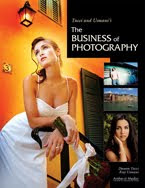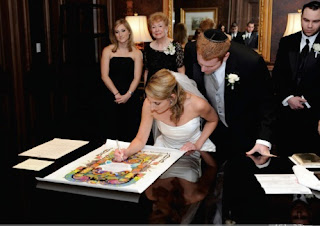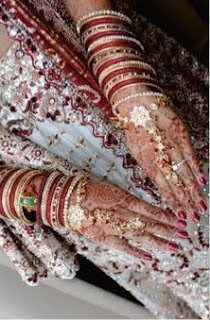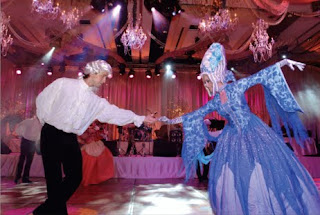
Today's post is an excerpt from the book Tucci and Usmani's The Business of Photography, by Damon Tucci and Rosena Usmani. It is available from Amazon.com and other fine retailers.
Once in a while, we have we have been fortunate enough to photograph celebrity clients. I have photographed sports legends Marshall Faulk and Horace Grant and one of the Backstreet Boys, Howie Dorough. I have also been fortunate enough to photograph some ostentatious, million-dollar events. These events can be very exciting, and they can also be very lucrative. They require a totally different mind-set. The stakes are higher, and so is the pressure. Perform well on the right one, and that can be your ticket in to the rich and famous. Fall on your face, and you’ll never work in this town again.
Here is how I have tackled such events: When doing these large jobs, the lead photographer must perform almost as a director. I employ a team of four or more. I am fortunate to have been in this business for a while, and I have a large pool of friends/colleagues I can call on to form the dream team for these events. Our fees are upward of $20,000 for these types of events. That gives us the budget to staff accordingly.

It’s better to have more hands on deck than less.There are a lot of balls to juggle when you are working these events. There are many times when important events are simultaneously going on in different locations. Typically, I stick to the bride and have other staff members photograph the group, capture detail shots, etc.

Let’s not forget Indian and Jewish ceremonies. The largest, most lucrative events I have photographed were Indian andJewish events. Indian events are a wonderful departure from traditional Christian ceremonies. The colors are vibrant, and the customs and rituals are fascinating. Indian weddings usually last three days or more and pay accordingly. Jewish weddings are rich in tradition. They are wonderful celebrations of life. The families are very close and, in my experience, they are a lot of fun. I love being in the middle of the hora with a fisheye lens on my camera—it’s like shooting a rock concert.
Both of these events require a rudimentary knowledge of the cultures to capture them effectively. While I was working at Disney, they had a rabbi come in and teach the non-Jewish photographers about the important elements of a Jewish wedding. You can also find out a lot of information online or check out Photographing Jewish Weddings (Stan Turkel; Amherst Media, 2009). My experience with Indian events was a little different. A young couple came to me for my contemporary style.

Many mainstream Indian photographers are very traditional in their approach. They tend to cater to the parents rather than the bride and groom. Anyway, I explained that I knew little about their culture but was up for the challenge. They assigned me a family member to help guide me on the must-have shots.That was many Indian events ago. Eventually, I got the hang of it, even though in my experience all of the Indian events I have photographed are a little different.
The bottom line is that both of these events are very lucrative and very enjoyable. Both cultures place a very high value on family and photographs. These are tight-knit communities, and if you do a great job for one of these clients, chances are you will be receiving calls from their friends soon.
Buy this book from Amazon



No comments:
Post a Comment